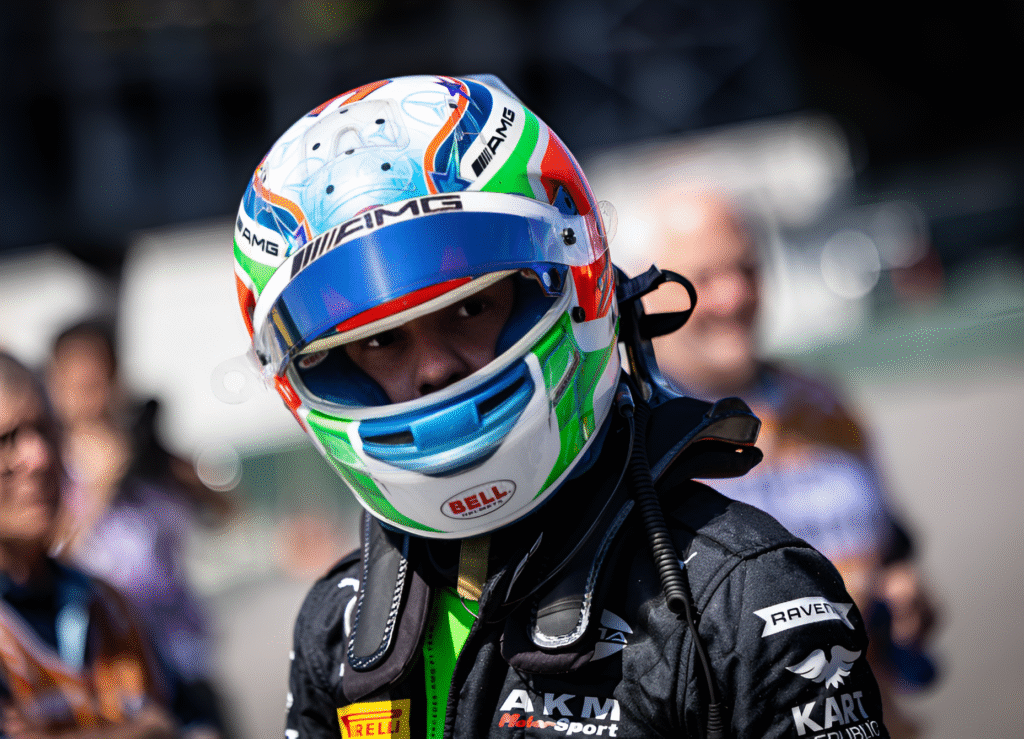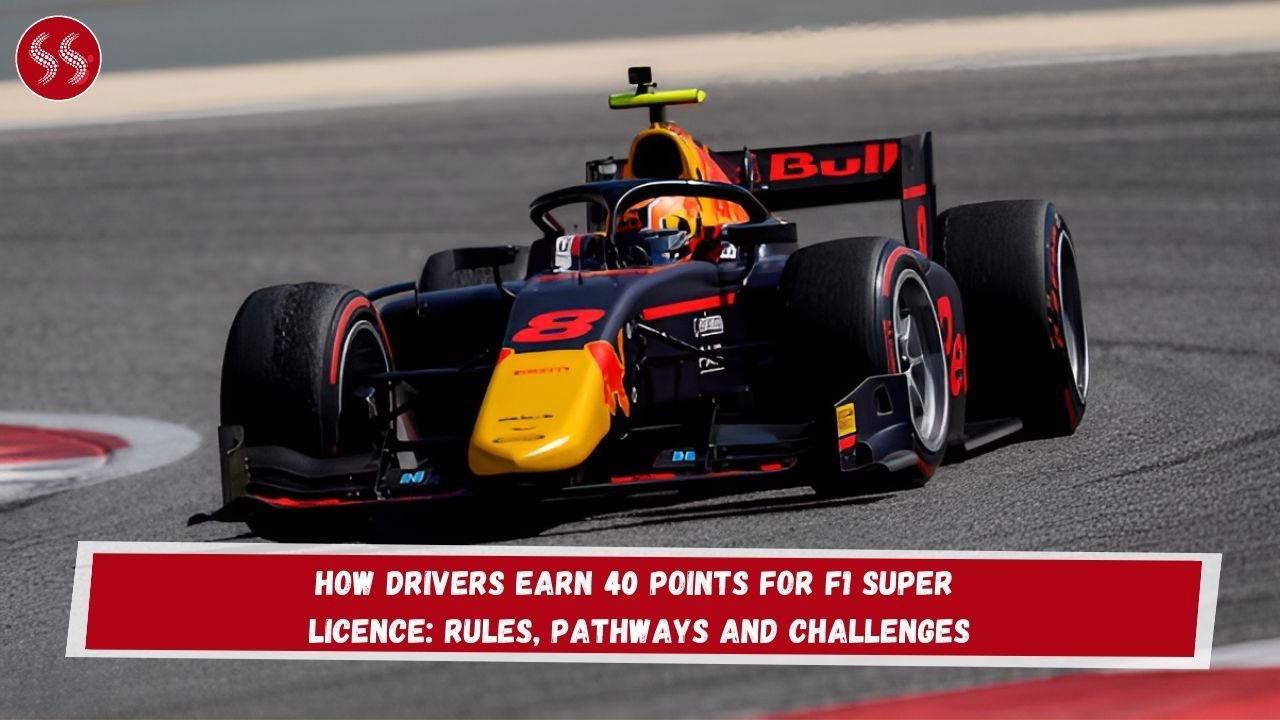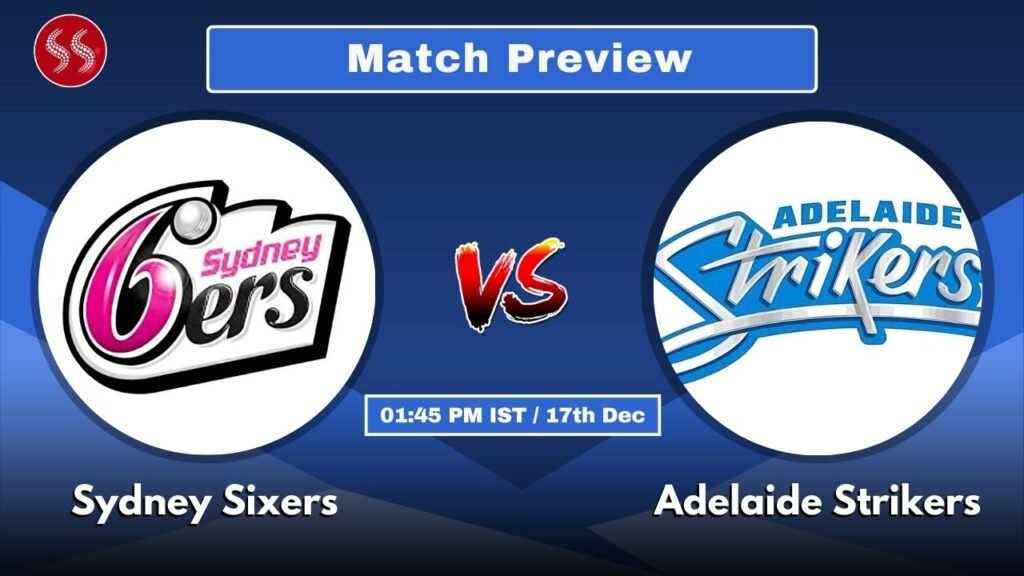Drivers Earn 40 Points for F1 Super Licence to race in the Formula 1 World Championship, as drivers need more than just speed and talent. They must hold a special qualification known as the FIA Super Licence. This licence is the highest level of certification in motorsport and is issued by the FIA (Fédération Internationale de l’Automobile), the global governing body of Formula 1.
Unlike regular driving licences, which allow you to drive on public roads, the FIA Super Licence is proof that a driver has the necessary skills, experience, and knowledge to compete at the very top of single-seater racing. However, obtaining it is not easy. There are several rules and requirements that every aspiring F1 driver must meet before they can even line up on the grid.
The Main Requirements for a Super Licence

The FIA has outlined a strict set of conditions under its International Sporting Code for drivers who want to compete in Formula 1. These are designed to ensure that only the most capable and prepared drivers reach the pinnacle of motorsport.
- International Grade A Licence – To apply for a Super Licence, a driver must first hold an FIA-issued International Grade A licence. This is usually earned through success in Formula 2, where Drivers Earn 40 Points for F1 Super Licence eligibility.
- Age Limit – A driver must be at least 18 years old. In rare cases, an exemption may be granted to a 17-year-old, provided they demonstrate exceptional ability.
- Knowledge Test – Candidates must pass a theory test that covers the FIA’s International Sporting Code and Formula 1 Sporting Regulations. This ensures drivers understand the rules of the sport, not just the racing aspect.
- Racing Experience – Drivers must complete at least 80% of two separate seasons in any FIA-recognised single-seater championship. This rule ensures they have the experience of competing across full racing campaigns.
- Super Licence Points – Perhaps the most crucial requirement is the points system. Drivers Earn 40 Points for F1 Super Licence qualification if they finish at the top in major feeder series like Formula 2 or IndyCar.
- Renewal Conditions – If a driver has already held a valid Super Licence for three seasons, they can obtain a new one by completing 100 km during a free practice session. However, if they have not held a Super Licence for more than three years, the FIA will review their case individually.
Interestingly, until 2024, drivers were also required to hold a standard road driving licence, but this rule has since been removed.
How Drivers Earn Super Licence Points
The Super Licence points system is one of the most talked-about aspects of the qualification process. It is designed to reward consistency and performance across various championships while preventing inexperienced drivers from entering Formula 1 too quickly.
- Formula 2 – The most direct path to F1. The top three finishers in F2 automatically qualify as Drivers Earn 40 Points for F1 Super Licence eligibility. This is why so many young racers aim for success in the series.
- IndyCar – The American championship also contributes. Here, the champion is where Drivers Earn 40 Points for F1 Super Licence recognition, while second place receives 30 points and third 20 points.
- Formula 3 and Formula E – Champions in these series may not immediately qualify, but still collect big points. While not always where Drivers Earn 40 Points for F1 Super Licence entry, the points gained here play a vital role.
- Other Championships – Competitions like the World Endurance Championship, NASCAR, and F1 Academy are also approved. These series may not be where Drivers Earn 40 Points for F1 Super Licence access, but they provide crucial steps along the journey.
Another pathway is through a “Free Practice Only” Super Licence. To qualify, a driver must complete at least six F2 races or hold 25 Super Licence points. Every 100 km driven in F1 free practice is another chance where Drivers Earn 40 Points for F1 Super Licence progression, provided they continue to perform well.
This system ensures that drivers reach F1 only after proving themselves across a variety of competitive racing formats.
Why Colton Herta Couldn’t Qualify

The case of American driver Colton Herta highlights just how strict the Super Licence rules can be. Herta, who was lined up to join Cadillac’s Formula 1 project, failed to qualify because he did not have enough points.
Over the last three IndyCar seasons, Herta accumulated only 35 points, five short of the threshold where Drivers Earn 40 Points for F1 Super Licence approval. To make matters worse, one of his results from 2023 will soon expire, dropping his tally to 34 points. Because of this, he cannot race in Formula 1 despite his strong reputation in the United States.
Instead, Herta will serve as Cadillac’s test driver in 2026 while also competing in Formula 2. In F2, finishing inside the top eight guarantees that Drivers Earn 40 Points for F1 Super Licence eligibility. This means Herta must perform well in the championship to finally qualify. His situation shows that even talented drivers cannot bypass the FIA’s rules.
The FIA Super Licence may seem like a barrier, but it exists to ensure that only the best-prepared and most consistent drivers make it into Formula 1. From passing theory tests to gathering the required points, Drivers Earn 40 Points for F1 Super Licence approval only by proving themselves in top-level championships. For young racers dreaming of F1 glory, this licence is the ultimate ticket to the grid, and the toughest qualification to achieve in motorsport.
SEE MORE:



